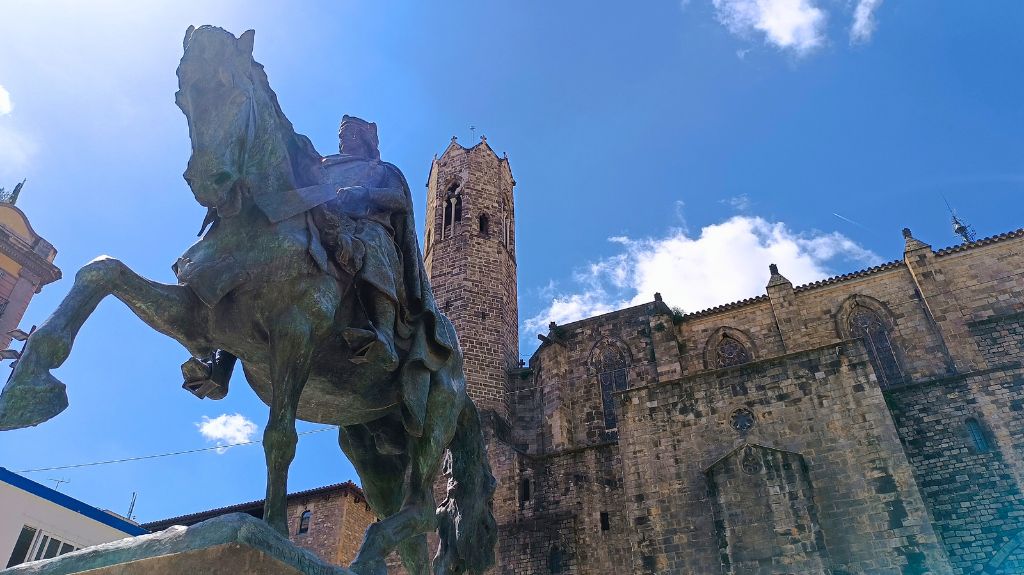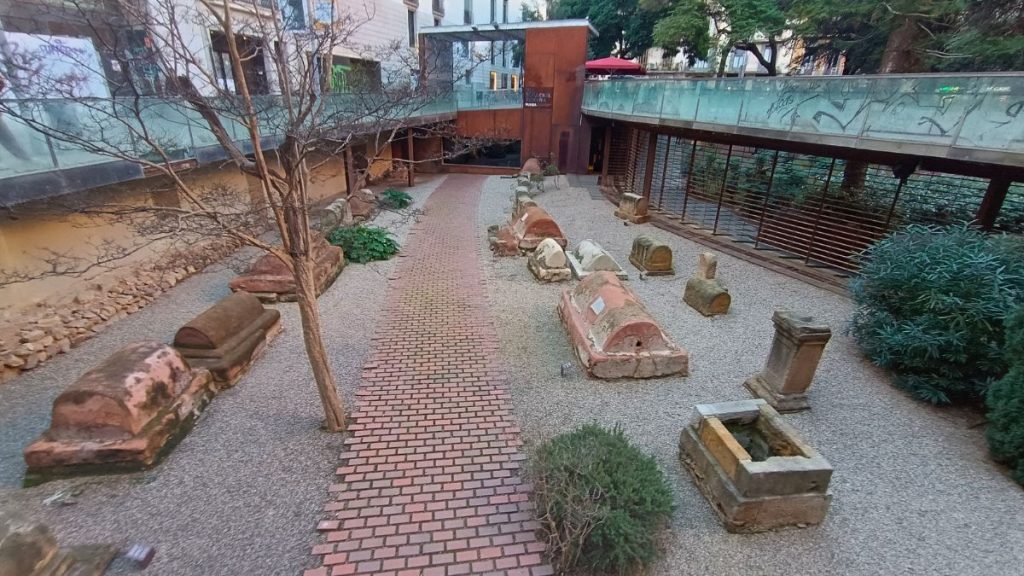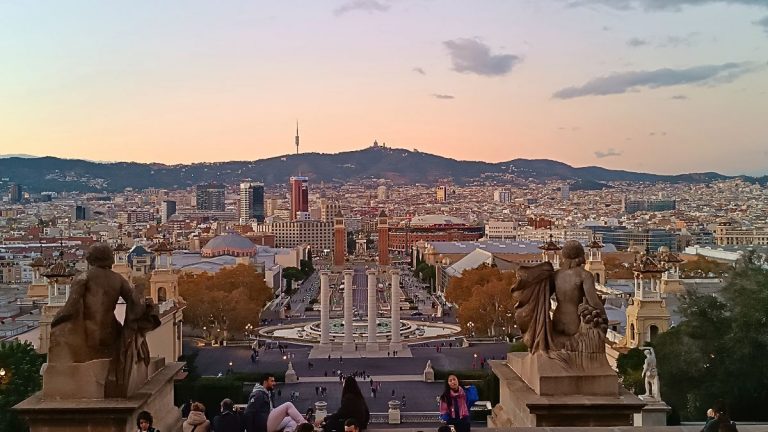5 Best Archaeological Sites to See Roman Ruins in Barcelona
If you’re curious about the ancient past hidden within its streets, you’ll love discovering Barcelona’s Roman ruins.
The city once known as Barcino still holds traces of temples, forums, houses, and a necropolis.
I’ve explored these archaeological sites tucked into the Gothic Quarter many times, and want to share the best spots with you.
Ready to go back in time 2,000 years?
Here are the 5 most fascinating Roman ruins in Barcelona you won’t want to miss.
Let’s explore!
Short on time? Here are my top Barcelona recommendations:
✨ Barcelona Card ✨ – free entrance, discounts, and transportation
✨ Catalonia Passeig de Gràcia ✨ – superb centrally located 4* hotel
Disclaimer: This page contains affiliate links. If you purchase through one of them, I may receive a small commission from the platform at no extra cost to you. Thanks for the support!
5 Fascinating Barcelona Roman Ruins for History Lovers

💡 Insider Tip: If you want to experience Barcelona without the hassle of planning, consider my custom travel itinerary service. Together, we can craft a personalized travel plan that caters to your interests. Let’s make your next Barcelona adventure magical!
1. Temple of Augustus

Hidden in a quiet backyard of the Gothic Quarter, the Temple of Augustus is one of the most striking Roman ruins in Barcelona.
Built in the 1st century BC to honor Emperor Augustus, it stood at the heart of Roman Barcino. The temple originally measured 35 meters long and 17 meters wide, but only four towering columns remain today.
You’ll find the impressive structures hidden inside the courtyard of the Centre Excursionista de Catalunya, just off Carrer Paradís. The way is well-signed if you know what you’re looking for.
Walking into the small backyard feels like stepping back 2,000 years. The massive columns rise above you with an unexpected grandeur.
The visit is free and gives you a clear picture of the scale of ancient Barcino.
2. Museu d’Història de Barcelona (MUHBA) at Plaça del Rei

Beneath the medieval Plaça del Rei lies one of Barcelona’s most fascinating historical sites.
At the Museu d’Història de Barcelona (MUHBA), you can walk through the underground remains of Roman Barcino. The site covers about 4,000 square meters, making it one of the largest urban Roman excavations in Europe.
As you explore, you’ll see paved streets, wine and fish workshops, temples, laundries, and parts of noble houses. The ruins show how people lived, worked, and socialized nearly 2,000 years ago.
What makes MUHBA special is the way history unfolds layer by layer, from Roman times through the Middle Ages.
You enter through the Gothic royal palace, then descend into an ancient city hidden below. It’s a journey that connects Barcelona’s Roman origins to its later history as a medieval power.
💡 Tip: Plan at least an hour here. The museum offers guided tours that add helpful context. Entrance is free every Sunday after 3 PM and the whole day on the first Sunday of the month.
3. The Old Forum at Plaça de Sant Jaume

Plaça de Sant Jaume is the political center of Barcelona today, but in Roman times it was the site of the forum, the heart of Barcino’s public life.
This was where citizens gathered for trade, religious ceremonies, and civic debates. The forum stood at the crossing of the city’s main streets, cardo and decumanus, which formed the grid of Roman Barcelona.
Although the original forum structures no longer stand, the location itself is powerful.
You’re standing where Roman temples, markets, and government buildings stood, later replaced by medieval and modern institutions. The square is home to the Palau de la Generalitat and the City Hall, keeping its role as the city’s civic hub alive.
💡 Tip: Look for street markers nearby that trace the Roman grid. MUHBA also has exhibits showing how the forum once looked, if you want more detail.
4. Via Sepulcral Romana at Plaça Vila de Madrid

Tucked into Plaça de la Vila de Madrid, Via Sepulcral Romana is an open-air necropolis used between the 1st and 3rd centuries AD.
More than 70 tombs have been uncovered here, showing how the Romans buried their dead along roads leading into the city. Walking through the site, you’ll see a variety of simple stone and brick graves. Citizens of the lower and middle classes of Barcino were buried in them.
What makes this place special is its location. Surrounded by modern apartment blocks and busy streets, it feels like a quiet pocket of history hidden in plain sight. Small displays explain the burial customs, and you can view the site from above or walk the pathways around the tombs.
💡 Tip: The necropolis is free to enter on Sunday afternoons. You can also see most of it from above as it sits below the street level.
5. The Roman Walls at Plaça de Ramon Berenguer el Gran

At Plaça de Ramon Berenguer el Gran, you’ll see one of the most impressive stretches of Barcelona’s Roman walls.
The fortifications surrounded Barcino, protecting it from invasions and marking the city’s limits. The walls were reinforced in the late 3rd and early 4th centuries AD, with towers that originally stood up to 18 meters tall.
What makes this spot especially striking is how history layers together. The medieval chapel of Santa Àgata stands directly on top of the Roman walls, creating a dramatic mix of two eras.
From the square, you get a clear view of the stonework and the scale of the fortifications that once defined the city. It’s a popular stop on walking tours, but the plaza itself is often calm, giving you time to take in the details.
💡 Tip: Visit in the evening when the walls are beautifully lit, adding atmosphere to your stroll through the Gothic Quarter.
Tips for Exploring Barcelona’s Roman Ruins

💡 Barcelona’s Roman ruins are located in the Gothic Quarter. You can easily walk from one site to the next. A self-guided route will save time and help you see how the Roman ruins in Barcelona connect with the medieval and modern city.
💡 Combine free and paid sites. The Temple of Augustus and the remains of the Roman walls are free, while MUHBA requires a ticket. Mixing them gives you a complete picture of Barcino without overspending.
💡 Visit MUHBA first. The underground ruins at Plaça del Rei provide great context for everything else you’ll see. Once you’ve walked the Roman streets, it’s easier to imagine the city above ground.
💡 Check opening times. Smaller sites may close early or only allow entry on certain days. A quick check before your visit avoids surprises.
💡 Go in the evening. The Roman walls at Plaça Ramon Berenguer look especially dramatic when lit up after dark, making it a great time for a relaxed stroll through history. Barcelona is safe at night, so don’t miss this incredible experience.
FAQs About the Roman Ruins Barcelona

Does Barcelona have Roman ruins?
Yes, Barcelona has well-preserved Roman ruins. The city was founded as Barcino by the Romans in the 1st century BC, and you can still see parts of its walls, temples, streets, houses, workshops, and even a necropolis. The remains are in the Gothic Quarter, often tucked between medieval and modern buildings.
Is there a Roman Colosseum in Barcelona?
No, Barcelona never had a Colosseum like the one in Rome. Barcino was a smaller colony, so it didn’t have large amphitheaters. Instead, it had practical structures like city walls, a forum, aqueducts, and temples. If you want to see Roman arenas in Spain, you’ll find them in Tarragona and Mérida.
Did the Romans build Barcelona?
Yes, the Romans founded Barcelona between 15 and 10 BC as the colony of Barcino. They built it on a small hill near the sea, laid out streets in a grid pattern, and surrounded the city with strong walls. Many of the remains you can see today date back to this period and show how Barcino grew into an important settlement.
Now You Know Where to See Roman Ruins in Barcelona
And there you have it – the 5 best places to see Roman ruins in Barcelona.
From hidden temple columns and ancient forums to underground streets and city walls, these archaeological sites reveal the layers of history beneath today’s bustling city. Whether you’re a history lover, a curious traveler, or simply want to see a different side of Barcelona, exploring these Roman remains will give you a whole new perspective.
Don’t miss the chance to walk through the streets of Barcino on your next trip and uncover the city’s Roman past for yourself.

💡 Insider Tip: If you want to experience Barcelona without the hassle of planning, consider my custom travel itinerary service. Together, we can craft a personalized travel plan that caters to your interests. Let’s make your next Barcelona adventure magical!






